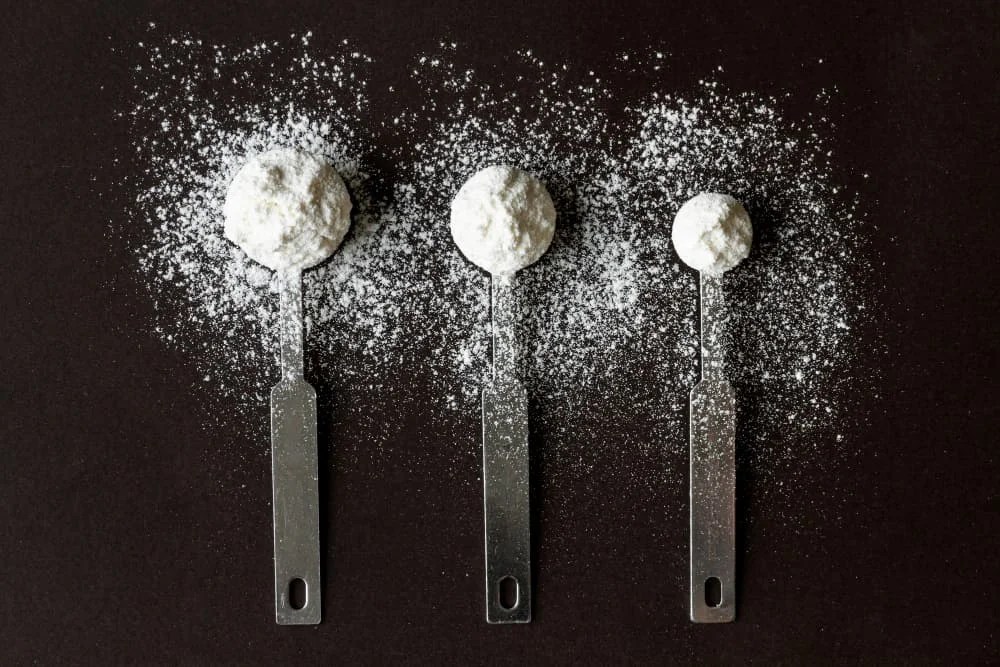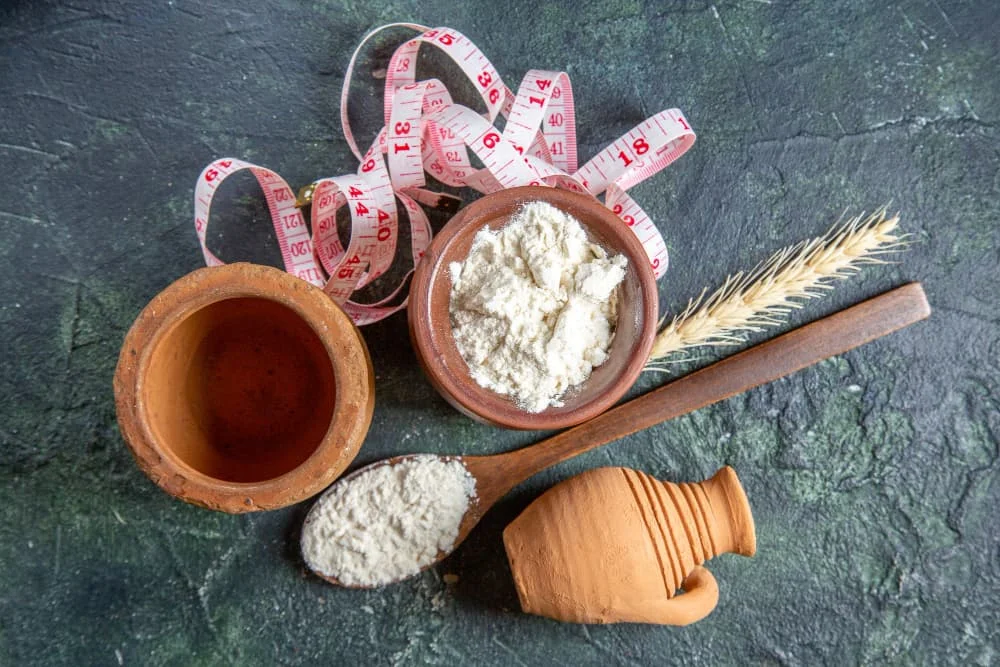Building muscle takes time, effort, and the right nutrition. While training and diet are the foundation, muscle boost supplements can provide extra support by enhancing performance, promoting muscle growth, and speeding up recovery. But with so many options available, it’s easy to get lost in marketing hype.
This guide will help you cut through the noise and focus on evidence-based muscle increase supplements. We’ll explore how they work, their benefits, and which ones truly deliver results.
What Are Muscle Boost Supplements?
Muscle increase supplements are dietary products formulated to support muscle growth, improve strength, and enhance recovery. They come in various forms, including powders, capsules, and liquids. Popular options include protein powders, creatine, and branched-chain amino acids (BCAAs).
While a balanced diet provides essential nutrients for muscle development, supplements can help fill gaps, making it easier to meet your daily needs.

How Do Muscles Grow and What Role Do Supplements Play?
Muscle growth, also known as hypertrophy, occurs when resistance training creates tiny tears in muscle fibers. The body repairs these fibers, making them stronger and thicker over time. This process depends on protein intake, essential nutrients, and recovery.
How Supplements Support Muscle Growth:
✅ Increase Protein Intake – Protein powders provide a quick and efficient way to meet daily protein needs, crucial for muscle repair and growth.
✅ Enhance Energy Levels – Creatine improves energy production, allowing for more intense workouts.
✅ Accelerate Recovery – BCAAs and other amino acids help reduce muscle soreness and speed up recovery, making training more effective.
⚠️ Important Note:
Supplements should not replace a well-balanced diet or structured workout plan. They act as complementary tools to enhance results, but consistent training and proper nutrition are still the foundation for muscle building.
Examining the Top 6 Muscle Boost Supplements
With so many muscle boost supplements on the market, choosing the right ones can feel overwhelming. This section breaks down six of the most scientifically backed muscle increase supplements, explaining how they work, their benefits, potential side effects, and how to use them effectively.
Whether you’re aiming for strength, endurance, or faster recovery, these supplements can help take your training to the next level.
1. Creatine – The Ultimate Strength Booster

Creatine is a naturally occurring compound found in red meat and fish, and it’s one of the most researched and effective supplements for increasing muscle mass and strength.
How It Works:
Creatine increases stored phosphocreatine levels in muscles, providing quick energy (ATP) for short bursts of high-intensity activity. This allows for greater power output, more reps and faster strength gains.
✅ Benefits of Creatine:
✔ Increases Strength & Power – Enhances performance in resistance training and explosive movements.
✔ Supports Muscle Growth – Promotes muscle hydration and protein synthesis, leading to size gains.
✔ Speeds Up Recovery – Reduces muscle inflammation and accelerates recovery between sessions.
✔ Boosts Energy & Performance – Especially effective for weightlifting, sprinting, and high-intensity training.
⚠️ Possible Side Effects:
While creatine is safe for most people, some may experience:
❗ Bloating or water retention (especially in the loading phase).
❗ Mild stomach discomfort if taken on an empty stomach.
❗ Cramping (usually due to dehydration).
🏆 How to Use Creatine for Maximum Gains:
📌 Loading Phase (Optional): 20g per day (divided into 4 doses) for 5-7 days to saturate muscles.
📌 Maintenance Phase: 3-5g per day to sustain levels.
📌 Best Timing: Take post-workout with a meal or mix it into your protein shake for better absorption.
📌 Stay Hydrated: Drink plenty of water to reduce side effects and enhance performance.
💡 Pro Tip: Creatine does not cause kidney damage in healthy individuals. If you have pre-existing conditions, consult your doctor before starting supplementation.
2. Protein Supplements – Essential for Muscle Growth & Recovery

Protein supplements are a convenient and effective way to increase daily protein intake, supporting muscle growth, repair and recovery. They are a staple in many fitness routines and come in various forms, with whey, casein and soy protein being the most widely used.
Types of Protein Supplements
✅ Whey Protein – A fast-digesting protein derived from milk, rich in essential amino acids. Its rapid absorption makes it ideal for post-workout recovery, helping stimulate muscle protein synthesis.
✅ Casein Protein – Also milk-based, but slow-digesting, releasing amino acids gradually over several hours. This makes it perfect for nighttime use to prevent muscle breakdown during sleep.
✅ Soy Protein – A plant-based alternative, suitable for vegetarians and vegans. It contains all essential amino acids, though its absorption rate is slightly lower than whey or casein.
Key Benefits of Protein Supplements
✔ Enhances Muscle Growth – Provides essential amino acids that fuel muscle repair and development.
✔ Speeds Up Recovery – Reduces muscle soreness and improves post-workout recovery.
✔ Convenient & Easy to Use – Ideal for those who struggle to get enough protein from whole foods due to busy schedules.
Best Times to Use Protein Supplements
🔹 Post-Workout: Whey protein is best after training due to its quick absorption, helping to maximize muscle recovery.
🔹 Before Bed: Casein protein is ideal at night, providing a steady release of amino acids to prevent overnight muscle breakdown.
🔹 Between Meals: A protein shake can serve as a nutritious snack, helping to fill protein gaps in your diet.
How Much Protein Should You Take?
A standard serving is 1-2 scoops (20-40g of protein) mixed with water, milk, or smoothies for an easy protein boost.
⚠ Important Reminder: While protein supplements are beneficial, they should complement—not replace—whole food sources. A well-rounded diet with lean meats, fish, eggs, dairy, legumes, and nuts will provide additional nutrients and benefits for muscle growth.
3. Weight Gainers – High-Calorie Support for Muscle Growth

Weight gainers, also known as mass gainers, are high-calorie supplements designed to support muscle growth and increase overall body weight. As a key category of muscle boost supplements, they combine protein, carbohydrates, and healthy fats with added vitamins and minerals to provide a dense source of calories. These supplements are particularly beneficial for individuals struggling to consume enough calories through whole foods alone.
Who Should Use Weight Gainers?
💪 Hard Gainers: Those with fast metabolisms who find it difficult to gain weight naturally.
🏋️♂️ Athletes & Bodybuilders: Individuals with high energy demands who need extra calories to fuel muscle recovery and growth.
⏳ Busy Lifestyles: Those who struggle to eat frequent high-calorie meals due to hectic schedules.
Key Benefits of Weight Gainers
✔ Provides a Calorie Surplus – Essential for gaining weight and building muscle mass.
✔ Supports Muscle Growth – When paired with resistance training, weight gainers help fuel muscle recovery and development.
✔ Convenient & Time-Saving – A quick way to consume a large amount of calories and nutrients when whole-food meals aren’t an option.
Potential Side Effects & Considerations
❌ Fat Gain Risk: Excess calorie consumption without proper training can lead to unwanted fat accumulation.
❌ Digestive Discomfort: Some individuals may experience bloating, gas, or stomach upset, particularly with low-quality formulas.
❌ High Sugar Content: Some products contain excessive sugar, which may negatively impact overall health if consumed frequently.
How to Use Weight Gainers Effectively
✅ Check the Label: Review the serving size, calorie content, and macronutrient breakdown before purchasing.
✅ Start with Smaller Servings: Begin with half a serving to assess tolerance before increasing intake.
✅ Pair with Strength Training: Ensure your calorie intake supports muscle building, not just weight gain.
✅ Monitor Progress: Track weight and muscle composition to ensure lean mass growth rather than fat accumulation.
✅ Choose Quality: Opt for products with balanced macronutrients and minimal artificial additives.
⚠ Important Reminder: Weight gainers should complement—not replace—a nutrient-dense diet. Prioritize whole food sources and use mass gainers strategically to meet your caloric and muscle-building goals. If unsure, consult a nutritionist or healthcare professional to ensure they fit your dietary needs.
4. Beta-Alanine – Enhancing Endurance & Performance

Beta-alanine is a non-essential amino acid that plays a crucial role in muscle endurance and performance. Unlike other amino acids, it is not used to build proteins. Instead, it serves as a key component in muscle boost supplements by increasing carnosine levels in muscle tissue, which helps delay fatigue during intense exercise.
How Beta-Alanine Works
🔬 When beta-alanine enters the body, it combines with histidine to produce carnosine, a buffering agent that reduces acid buildup in muscles during high-intensity exercise.
💥 Why This Matters: During exercise, hydrogen ions (H+) accumulate, lowering muscle pH and causing fatigue. Higher carnosine levels help buffer this acidity, delaying muscle fatigue and allowing for longer, more intense workouts.
Key Benefits of Beta-Alanine
✔ Increases Muscular Endurance – Particularly beneficial for exercises lasting 60-240 seconds, such as high-rep weight training, sprinting, and HIIT workouts.
✔ Improves Exercise Performance – Helps delay muscle fatigue, allowing for more reps, heavier lifts, and longer endurance workouts.
✔ Supports Muscle Growth Indirectly – While beta-alanine does not directly build muscle, its ability to increase workout intensity over time contributes to muscle development.
Potential Side Effects & Considerations
❌ Paresthesia (Tingling Sensation): A common, harmless side effect that causes a tingling feeling in the face, neck, or hands. This sensation fades over time or with smaller, divided doses.
❌ Flushing & Warmth: Some individuals may experience a mild warm sensation or redness in the skin, which is temporary.
How to Use Beta-Alanine for Maximum Effect
✅ Recommended Dosage: 2-5 grams per day, taken consistently to build up carnosine levels in muscles.
✅ Timing: Beta-alanine can be taken anytime but is often split into smaller doses throughout the day to reduce the tingling sensation.
✅ Consistency Matters: Unlike pre-workout stimulants, beta-alanine must be used regularly over several weeks to achieve its full benefits.
⚠ Important Note: While generally safe, consult a healthcare professional before starting beta-alanine, especially if you have pre-existing health conditions.
5. Branched-Chain Amino Acids (BCAAs) – Muscle Recovery & Performance

Branched-chain amino acids (BCAAs) consist of three essential amino acids: leucine, isoleucine, and valine. Since the body cannot produce them naturally, they must be obtained from food or supplements. As a core component of muscle boost supplements, BCAAs play a vital role in muscle recovery, protein synthesis, and fatigue reduction, making them highly popular among athletes and fitness enthusiasts.
Key Benefits of BCAAs
✔ Speeds Up Muscle Recovery – Helps reduce muscle soreness after intense exercise, allowing for faster recovery.
✔ Prevents Muscle Breakdown – Protects lean muscle from catabolism, especially during calorie deficits or prolonged training.
✔ Enhances Exercise Endurance – Can delay fatigue, helping maintain energy levels during workouts.
✔ Supports Muscle Protein Synthesis – Leucine plays a critical role in triggering muscle growth and repair.
When & How to Use BCAAs
📌 Before or During Workouts – Helps sustain energy levels and reduce fatigue during exercise.
📌 After Workouts – Supports muscle repair and recovery, reducing post-exercise soreness.
📌 Recommended Dosage – 5-10 grams per serving, depending on training intensity.
📌 Form Options – Available in powder, capsules, or tablets for easy consumption.
BCAAs vs. Other Muscle Supplements
⚡ BCAAs vs. Protein Powders – While protein powders provide a full range of amino acids, BCAAs isolate key amino acids that specifically support recovery and endurance.
⚡ BCAAs vs. Creatine – Creatine boosts muscle energy and strength, whereas BCAAs focus on muscle preservation and recovery.
🚨 Important Note: BCAAs are not a substitute for whole food proteins. Prioritize lean meats, eggs, fish, dairy, and plant-based sources, and use BCAAs as an additional recovery aid rather than a replacement. If you have kidney-related health conditions, consult a healthcare professional before using BCAAs.
6. Beta-Hydroxy Beta-Methylbutyrate (HMB) – Muscle Preservation & Recovery
Beta-Hydroxy Beta-Methylbutyrate (HMB) is a metabolite of leucine, one of the key BCAAs. Recognized as part of muscle booster supplements, HMB is known for reducing muscle breakdown and supporting recovery, making it particularly useful for beginners, individuals returning to training, or those undergoing high-intensity workouts.
How HMB Works
🔬 Reduces Muscle Protein Breakdown – Unlike leucine, which primarily stimulates muscle growth, HMB works by preventing muscle degradation, making it valuable during periods of caloric restriction, intense training, or recovery from injuries.
Key Benefits of HMB
✔ Prevents Muscle Loss – Helps maintain lean muscle mass, especially during cutting phases or intense training.
✔ Boosts Strength & Power – Some studies indicate HMB can slightly enhance strength levels when combined with resistance training.
✔ Accelerates Recovery – By reducing muscle damage, HMB allows for quicker recovery between training sessions.
✔ Ideal for Beginners – Research suggests HMB may be more beneficial for new lifters or those returning to exercise after a break.
Potential Side Effects & Considerations
❌ Mild Digestive Issues – Some individuals may experience stomach discomfort or mild bloating.
✅ Recommended Dosage – 1.5-3 grams per day, often split into smaller doses for better absorption.
✅ Timing – Can be taken before or after workouts to maximize recovery benefits.
🚨 Important Note: While HMB is promising for muscle preservation, its effects on muscle growth in well-trained individuals are less clear. If you’re an advanced athlete, HMB may not provide significant muscle-building advantages. Always consult with a nutritionist or healthcare professional before incorporating HMB into your regimen.
Other Supplements: Do They Work?
In addition to widely recognized muscle boost supplements like protein powders and creatine, many other products claim to enhance muscle growth, recovery, and performance. However, not all supplements have strong scientific backing. Below, we break down some of the lesser-known options, what they promise, and whether they actually deliver results.
1. Conjugated Linoleic Acid (CLA)
CLA is a naturally occurring fatty acid found in meat and dairy, often marketed for its ability to reduce body fat and increase lean muscle mass.
Scientific Evidence:
✔ Some animal studies suggest CLA may help reduce fat while preserving muscle.
❌ Human studies are inconsistent, with most showing little to no significant impact on muscle growth or fat loss.
Potential Side Effects:
⚠ Digestive discomfort, bloating, and a possible negative impact on insulin sensitivity.
Verdict: ❌ Lacks strong scientific support. More research is needed before CLA can be considered a reliable muscle-building supplement.
2. Glutamine and Carnitine
Glutamine
Glutamine is the most abundant amino acid in the body and plays a role in muscle protein synthesis and recovery. It is often marketed as a recovery supplement to reduce muscle soreness and enhance repair.
Scientific Evidence:
✔ May support immune function and gut health, particularly in people under extreme physical stress.
❌ Does not significantly enhance muscle growth or performance in healthy individuals who consume enough protein through diet.
Verdict: 🚫 Not essential for muscle growth unless under extreme stress (e.g., endurance athletes, those with muscle-wasting conditions).
Carnitine
Carnitine helps transport fatty acids to mitochondria for energy production and is often marketed as a fat burner and endurance booster.
Scientific Evidence:
✔ Some studies suggest slight improvements in recovery and endurance for older adults.
❌ Limited evidence of benefits for young, healthy individuals.
Verdict: 🚫 Minimal impact on muscle growth. Best for endurance athletes rather than strength trainers.
3. Testosterone Boosters
Testosterone boosters are supplements that allegedly increase testosterone levels, which can promote muscle growth, fat loss, and strength gains. These products often contain herbal extracts, vitamins, and minerals such as fenugreek, D-aspartic acid, and zinc.
Scientific Evidence:
✔ Some ingredients, like vitamin D and zinc, may support testosterone production if you have a deficiency.
❌ For most healthy individuals, these supplements do not significantly raise testosterone levels enough to impact muscle gain.
Key Considerations:
⚠ May disrupt hormone balance if misused.
⚠ Natural testosterone support (proper sleep, strength training, and a balanced diet) is far more effective than most over-the-counter boosters.
Verdict: 🚫 Ineffective for muscle gain unless treating a diagnosed deficiency. Consult a healthcare provider before use.
Creating a Muscle Building Supplement Stack
“Stacking” refers to combining multiple supplements strategically to maximize muscle growth, recovery, and performance. While a well-planned stack can be effective, blindly adding supplements without proper research can lead to wasted money or potential side effects.
How to Build a Safe & Effective Stack
✔ Start with the Basics – Stick to proven supplements like protein and creatine before experimenting with additional products.
✔ Define Your Goals – Choose supplements based on your specific needs (e.g., muscle gain, endurance, recovery).
✔ Avoid Overcomplication – More isn’t always better. Start small, assess effectiveness, and adjust accordingly.
✔ Read Labels Carefully – Check ingredients, dosages, and potential interactions before adding a supplement to your stack.
✔ Cycle When Necessary – Some supplements, like creatine, can be cycled for optimal benefits (e.g., 6-8 weeks on, 2-4 weeks off).
Basic Muscle Growth Stack
✅ Whey Protein – Supports muscle repair and growth post-workout.
✅ Creatine Monohydrate – Increases strength and power output.
✅ Beta-Alanine – Delays muscle fatigue, allowing longer workouts.
Advanced Performance & Recovery Stack
✅ Whey or Casein Protein – Whey for post-workout, casein for nighttime recovery.
✅ Creatine – Enhances strength and endurance.
✅ BCAAs – Supports muscle recovery and reduces soreness.
✅ Beta-Alanine – Improves workout endurance and intensity.
✅ HMB – Helps prevent muscle breakdown, particularly useful in cutting phases.
Final Thoughts
While the supplement industry is filled with marketing hype, focusing on scientifically backed muscle booster supplements will yield the best results. Prioritize whole foods, effective training, and recovery, and use supplements as a tool to enhance—not replace—your fitness efforts. Always consult a sports nutritionist or healthcare professional before trying new supplements, especially if you have underlying health conditions.
🔎 Choosing wisely = maximizing gains! 🚀






